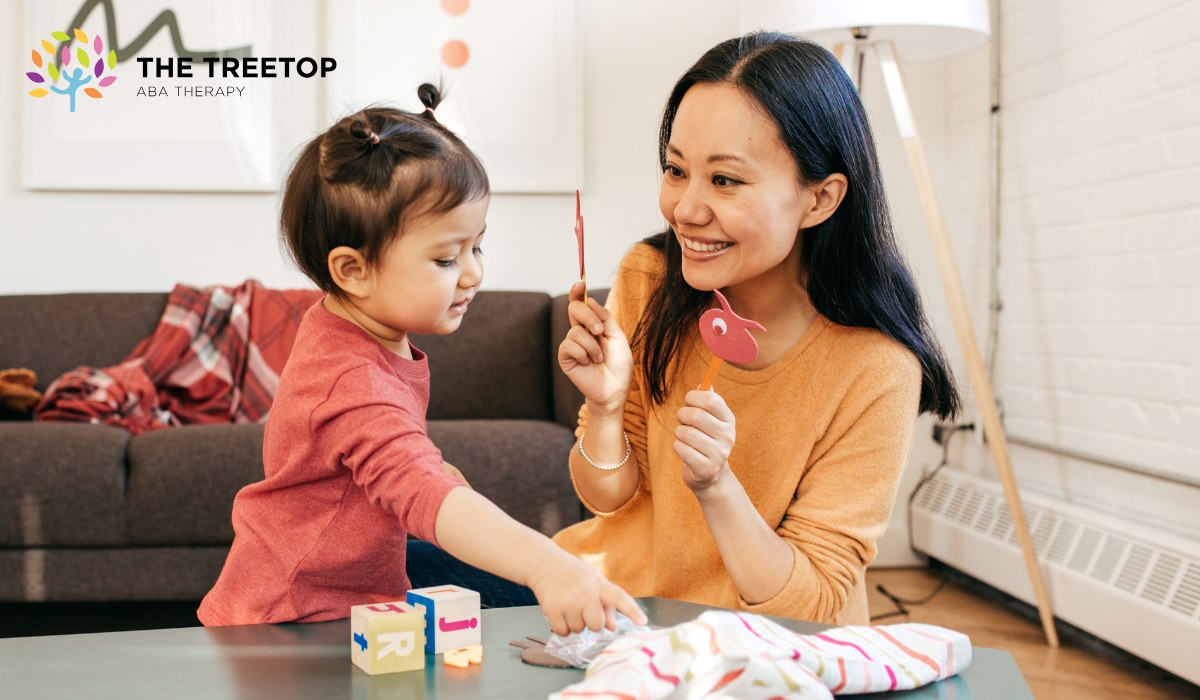Social Communication in Autism: Signs, Struggles & Solutions

Written By:
Fact-checked By:
October 27, 2025
Social communication in autism affects learning and friendships. Explore common signs, struggles, and solutions to support your child’s growth.

Key Points:
- Social communication challenges in autism impact relationships, learning, and self-expression.
- Parents can look out for specific signs, such as difficulties with back-and-forth conversation and interpreting nonverbal cues.
- Support strategies—including structured teaching, modeling, and ABA therapy—can significantly improve communication and social growth.
Social communication is one of the core areas impacted by autism spectrum disorder (ASD). For many children on the spectrum, connecting with peers, expressing thoughts clearly, and understanding social cues can feel like navigating a foreign language. These struggles don’t just affect friendships; they influence learning, self-confidence, and everyday interactions.
Parents often notice differences early on but may not always understand why their child avoids eye contact, repeats phrases, or struggles to carry a conversation. Recognizing the signs and exploring effective solutions is the first step toward empowering children with the skills they need to thrive.
In this article, we’ll walk through the common signs of social communication challenges in autism, explore the struggles families often face, and discuss practical solutions that can help—including how ABA therapy makes a difference.
Understanding Social Communication in Autism
Before diving into the signs and struggles, it helps to understand what social communication actually means. Social communication is more than just talking—it includes all the ways we share information, emotions, and ideas with others. This involves both verbal skills (words, phrases, sentences) and nonverbal skills (tone, facial expressions, body language).
Children with autism often learn these skills differently, and sometimes they don’t come naturally. Instead of picking up on social rules through observation, many children need direct teaching, practice, and consistent reinforcement.
5 Common Signs of Social Communication Difficulties
Not every child with autism will show the same patterns, but there are common signs parents can look for. These differences may show up in preschool, during playdates, or even in everyday family conversations.
Here are some of the key indicators:
- Difficulty with back-and-forth conversation: A child may give one-word answers, struggle to ask follow-up questions, or shift topics abruptly. This can make conversations feel one-sided or confusing for peers.
- Challenges with eye contact and body language: Some children may avoid eye contact altogether, while others may use gestures inconsistently. Difficulty interpreting others’ body language can also lead to misunderstandings.
- Literal interpretation of language: Sarcasm, jokes, and idioms often don’t land as intended. A child might take phrases like “break a leg” literally, leading to confusion or anxiety.
- Repetitive or scripted speech: Repeating phrases from TV shows, books, or previous conversations is common. While this can be a way of practicing language, it may limit flexible communication.
- Struggles with initiating play or conversation: A child may want to join in but doesn’t know how to approach others or what to say. This can sometimes be misinterpreted as disinterest when the desire to connect is actually there.
These signs can feel overwhelming for parents, but identifying them early helps guide the right supports.

Struggles Families and Children Experience
When communication doesn’t flow naturally, it can lead to daily frustrations—not only for the child but also for parents, teachers, and peers. These struggles often extend beyond the classroom and into the child’s broader development.
Academic Impact
Social communication is tied closely to learning. Group work, class discussions, and even following multi-step instructions can feel daunting without strong communication skills. This sometimes leads to missed learning opportunities or frustration with school routines.
Peer Relationships
Building friendships requires understanding unspoken rules—like knowing when it’s your turn to speak or how to join a game. Without guidance, children with autism may experience social rejection or isolation, which can affect their self-esteem.
Emotional Regulation
Communication challenges often heighten frustration. A child who cannot express needs effectively may resort to meltdowns or avoidance behaviors. This can create tension at home and in social environments.
Parental Concerns
Parents often feel unsure about how to support their child in real-world social settings. Questions like “Should I step in?” or “How do I coach them without embarrassing them?” are common and valid concerns.
These struggles are real, but the encouraging news is that there are structured, evidence-based ways to build stronger communication skills.

Solutions That Make a Difference
While there is no single approach that works for every child, many strategies have been proven to support social communication growth in children with autism. These approaches are most effective when tailored to the child’s unique needs and practiced consistently across settings.
1. Structured Teaching and Visual Supports
Children with autism often learn best when information is clear, visual, and predictable. Tools such as visual schedules, social stories, and role-playing help break down social interactions into smaller, teachable steps. For example, a social story about “how to join a game at recess” can guide a child step by step in a way that feels less overwhelming.
2. Peer Modeling and Guided Play
Observing peers and practicing with adult support can help children pick up social rules more naturally. Guided playgroups or structured playdates can offer a safe space for practicing turn-taking, greetings, and conversational reciprocity.
3. Parent Coaching
Parents play a central role in reinforcing communication skills outside therapy. When parents learn strategies—like prompting eye contact gently or modeling how to ask for help—they can give their child more opportunities to practice in everyday settings.
4. Speech Therapy Collaboration
Speech-language pathologists (SLPs) often work alongside ABA providers to strengthen both language mechanics and social communication. This collaboration ensures the child isn’t just learning to say words, but also how to use them meaningfully in context.
5. ABA Therapy for Social Skills
Applied Behavior Analysis (ABA) focuses on breaking down complex skills into manageable steps. At Treetop ABA Therapy, children are guided through structured lessons that target conversation skills, nonverbal communication, and peer interaction. Each skill is reinforced with positive feedback, making it more likely to be used again in natural settings.
Practical Strategies Parents Can Try at Home
Even outside therapy, parents can help their child build stronger communication skills through small but powerful everyday practices. These strategies take advantage of natural moments for learning:
- Narrate your day together: Talk through routines as they happen: “We’re putting on shoes. First your socks, then your sneakers.” This builds vocabulary and models sequencing.
- Practice turn-taking games: Board games, card games, or even simple ball tosses are great for teaching patience, waiting, and sharing attention.
- Model flexible thinking: If plans change, narrate how you handle it: “We were going to the park, but it’s raining. Let’s pick another fun activity.” This shows flexibility and coping strategies.
- Encourage “comment, don’t just request”: Instead of focusing only on asking for items, encourage your child to make comments like “That’s funny” or “I like your toy.” This supports conversational reciprocity.
- Use video modeling: Watching short videos of children demonstrating greetings, conversations, or play behaviors can give your child a visual example to follow.
Each of these strategies works best when paired with patience and consistency. Over time, these small steps accumulate into meaningful progress.
How ABA Therapy Supports Lasting Growth
ABA therapy stands out as one of the most effective tools for teaching social communication in autism. By analyzing each child’s current skills and building a personalized plan, ABA providers help children develop communication step by step.
At Treetop ABA Therapy, sessions are designed to be engaging and practical, focusing on real-world skills like making friends, joining group activities, and expressing needs calmly. Parents are also included in the process, so strategies are reinforced consistently at home and in the community.
This collaborative approach gives children more opportunities to practice and generalize skills, which is essential for long-term success.
Final Thoughts and Next Steps
Social communication challenges can make childhood feel more complicated—for both the child and the family. But with the right support, children with autism can learn to connect, express themselves, and build meaningful relationships.
If you’re ready to support your child’s social and communication growth, ABA therapy is one of the most effective options available. Treetop ABA Therapy provides personalized programs designed to help children gain confidence in real-world interactions.
We proudly offer ABA therapy in Colorado, Arizona, Georgia, New Mexico, and Oklahoma. Contact us today to take the first step in helping your child grow socially and emotionally with the right tools and guidance.
Similar articles
Reaching New Heights With The TreeTop ABA Therapy
Our mission is to help improve the lives of children with ASD and their families with home and community based ABA therapy.

